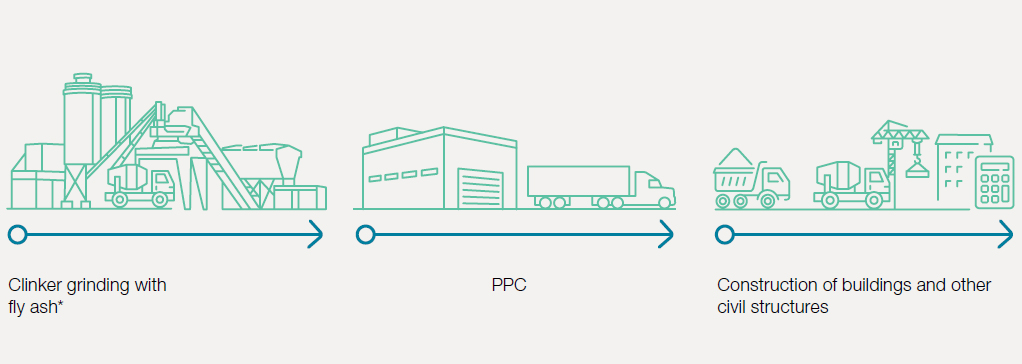Since the production of cement is a major contributor to climate change – generating about 8% of global carbon dioxide or CO2 emissions – the cement industry is working to find ways to reduce emissions. Most of the cement industry’s CO2 emissions are generated at the pyro-processing or calcination stage from heating the kiln with coal (fossil-fuel combustion) and burning the limestone at high temperatures.
One solution has been to change the composition of cement by partially replacing conventional clinker with fly ash, which is a by-product of coal-fired power stations. The fly ash generated by these plants is typically dumped into ash ponds or buried in landfill sites. Both pose serious health risks for the surrounding environment. To reduce the prevalence of such practices, cement companies use fly ash to produce portland pozzolana cement (PPC), thereby upcycling fly ash into building materials.
PPC has higher fineness and nearly the same compressive strength as slightly higher-priced ordinary portland cement (OPC). Today, PPC is widely used in plaster and brickwork, mass concrete work and reinforced-cement concrete work.
Over the past few years, we have significantly reduced our production of OPC, as we are gradually shifting to the eco‑friendlier PPC.
Cement upcycling value chain

*Fly ash is a scrap produced by coal-fired thermal power plants. The fly ash generated in thermal power plants is usually dumped into ash ponds to avoid environmental hazards of contamination. We blend fly ash to produce portland pozzolana cement, thereby upcycling fly ash into building materials. This process optimises the use of limestone and preserves the same for future generation.
0.7 Mn Tonnes
fly ash consumed or
upcycled in 2021